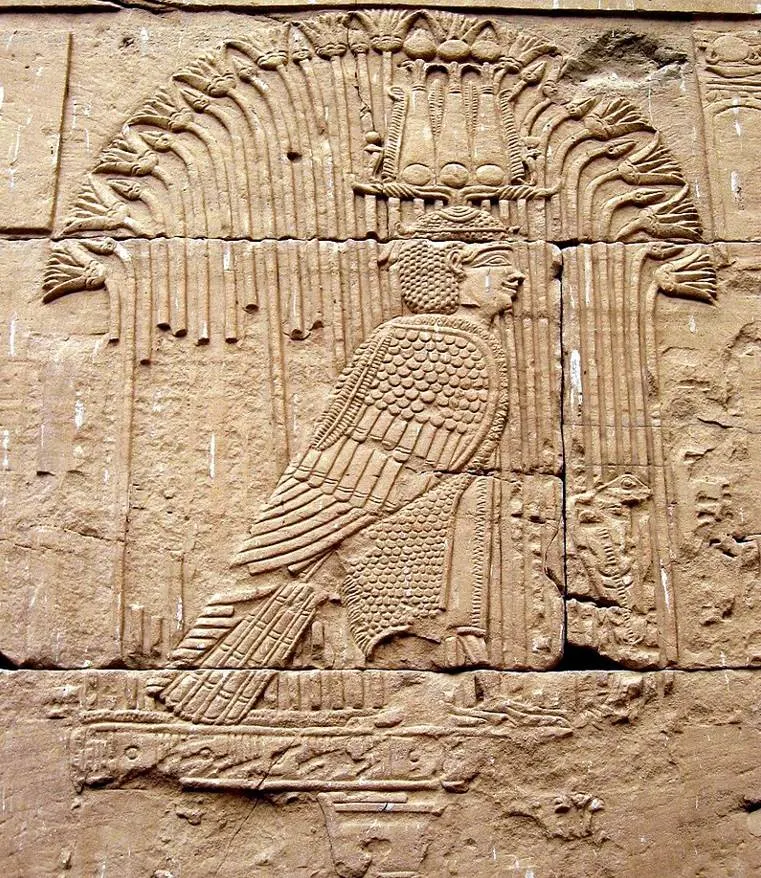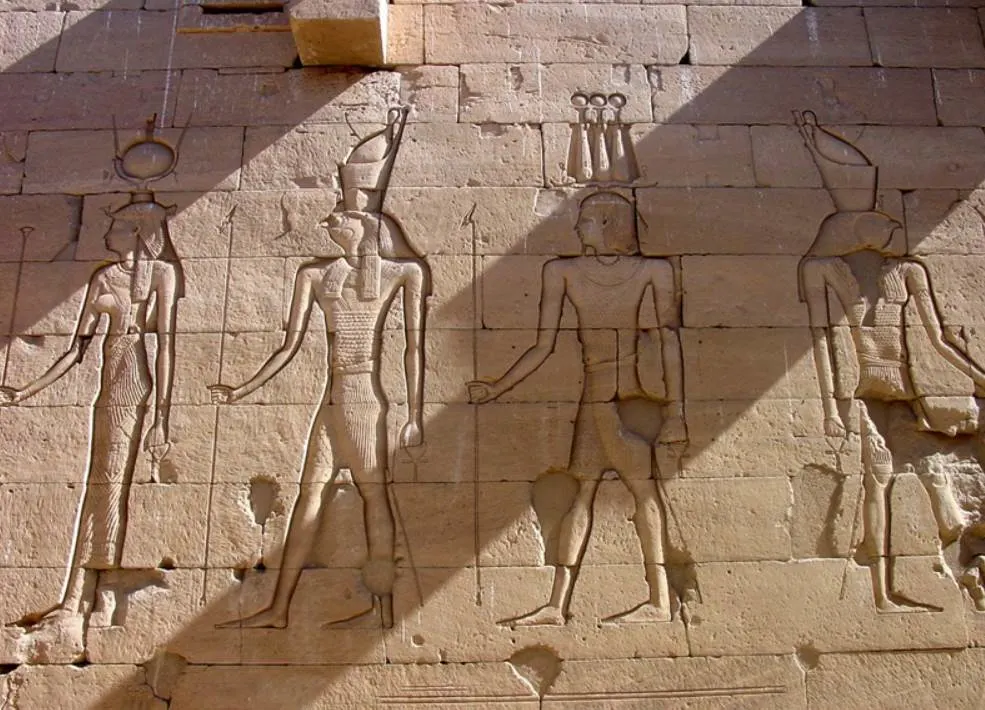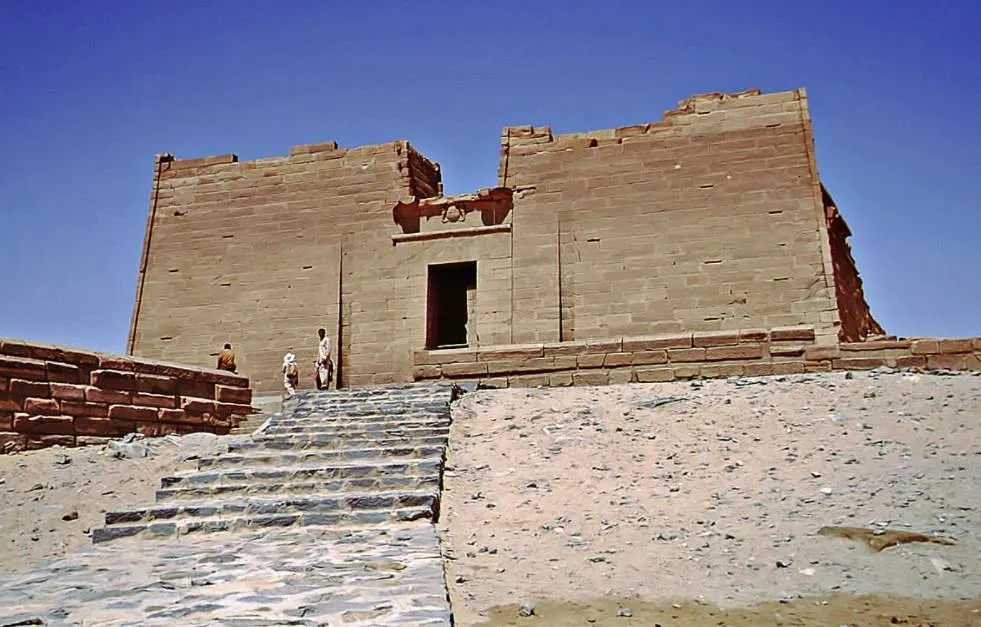Several of the most famous Egyptian temples were built after Egypt became merely a province of the Roman Empire.
This happened after the death of Cleopatra VII, the last Pharaoh of the Ptolemaic Dynasty after she was defeated together with Mark Anthony by Octavian at the Battle of Actium.
In this article, you’ll discover some of the most interesting facts about the Temple of Kalabsha, a temple that was constructed around the time that these important events in world history took place.
1. It’s located in the utmost southern part of Egypt
The Temple of Kalabsha is one of the numerous famous ancient Egyptian temples that were constructed thousands of years ago. Today, it’s located on a small island inside Lake Nasser overlooking the Aswan High Dam.
This small island only has a length of a few hundred meters and is situated just a few kilometers east of the Aswan International Airport and a similar distance south of Aswan, a major city in the south of Egypt.
On the other side of the dam, further north, you can also find the Philae Temple complex, another famous landmark near Aswan.

2. The temple was originally located much further south
The temple is named after the small village named Bab al-Kalabsha. This village is located approximately 50 kilometers (31 miles) south of Aswan and its name translates to “The Gate of Kalabsha.”
The Temple of Kalabsha was built on the west bank of the Nile River in Nubia, an area that was home to one of the oldest civilizations in Africa called the Kerma culture. The Nubia region was eventually conquered by Pharaoh Thutmose I around 1500 B.C. and annexed in the New Kingdom of Egypt.
The structure features a rooftop platform that originally majestically overlooked the Nile. Today, it overlooks Lake Nasser because the temple was moved here before the construction of the Aswan High Dam during the 1960s.

3. It was built during the early stage of the Roman Empire

The temple was built during the final years of the Ptolemaic Kingdom around 30 B.C. This was around the time of the War of Actium, an event that took place between 32 and 30 B.C.
A Roman general named Gaius Octavius, the nephew of Julius Caesar himself, defeated his rival Mark Anthony who had collaborated with Cleopatra VII, the final Pharaoh of the Ptolemaic dynasty. Both Anthony and Cleopatra were besieged in Alexandria and were forced to commit suicide.
Octavian seized power and gradually transformed the Roman Republic into the Roman Empire, giving himself the title of Augustus, a name he went by throughout his reign between 27 B.C. and his death in 14 A.D.
One of the most fascinating facts about the Temple of Kalabsha is that it was built when these events unfolded.
4. The Temple of Kalabsha was dedicated to a Nubian god
Although it was constructed around the time that Augustus seized power and effectively transformed the Roman Republic into the Roman Empire, it was still dedicated to an Ancient Egyptian god.
The temple was originally known as the “Temple of Mandulis, a god that originated in ancient Nubia but that was also worshipped in ancient Egypt. Mandulis is the Greek name of the god referred to as “Merul” or Melul.”
We know exactly how this ancient Egyptian deity was perceived because reliefs depicting him were carved into the temple’s walls.

5. It’s a huge structure despite the fact that it was never finished
Most parts of the temple were built during the final years of the Ptolemaic Dynasty and it was greatly expanded during the reign of Augustus. It was also expanded during the reign of Vespasian (69-79 A.D.) as part of his propaganda campaign.
The temple was, however, never completed, and that’s mainly because of the sheer size of the structure. It has a length of 76 meters (249 feet) and a width of 22 meters (72 feet).
It features a very similar design as most other temples built during the Ptolemaic Dynasty, which means multiple inner courtyards lined with columns that lead up to the inner sanctuary.

More interesting facts about the Temple of Kalabsha
6. The purpose of the temple was gradually changed when Christianity was introduced to Egypt. While it’s uncertain when this transition was made, the massive temple was used as a church, probably in the early 4th century when Christianity became the main religion of the Roman Empire.
A lengthy relief featuring a Latin text added by Roman Governor Aurelius Besarion in 250 A.D. doesn’t make us much wiser as well because it merely mentions that “pigs weren’t allowed inside the temple.”
7. The temple features multiple beautiful ancient Egyptian reliefs, most of them dedicated to the god Mandulis. The Temple of Kalabsha wasn’t the only temple dedicated to him because he was also the prominent deity at the Tempe of Ajuala.
He was also worshipped at Philae and the Temple of Dendur where he was identified as “The great god, lord of Talmis,” a reference to the Talmis region near Aswan. Both Horus and Augustus were added to the temple walls as well.

8. Moving the temple to its current location was a huge endeavor as it took a German team of experts 2 years to complete the project. It was the second-largest temple to be moved after the temple complex of Abu Simbel, but the relocation was much further.
It’s not the only temple that was moved to this small island on Lake Nasser as well, because the rock-carved Temple of Beit el-Wali is located here as well.

9. The Egyptian government was so happy with the help from the German archaeological team that they offered one of the gates of the Temple of Kalabsha as a gift. This gate has been on display at the Egyptian Museum in berlin since 1977.
The gate will be relocated once more as it will become the entrance of the fourth wing of the Pergamon museum on Museum Island in Berlin, a remodeling project that is currently ongoing.
10. It’s one of the Nubian temples that became a UNESCO site in 1979. It was added to the UNESCO list together with Philae, the temples of Abu Simbel, and the Temple of Amada, the oldest Nubian temple in Egypt. Both are equally amazing attractions in the southern part of the country.

